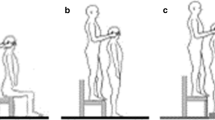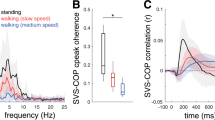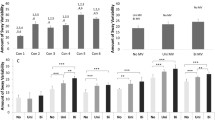Abstract
The purpose of this study was to compare a vestibular and central nervous system to sway a head motion in the stable posture. A displacements of vestibular and central nervous system analyzed to appear the five ranges of stance, the central nervous system of normal eyes open (NO) and normal eye close (NC) showed a big variation across all condition. Vestibular-head motion implied adaptive changes to take place in the control of vestibular reflexes processes and physical mechanism. Vestibule-spinal-flow was to show the vestibular nucleus through to innervate a cervical from the spinal cord. The average of diverse outputs with the perturbations obtained as follows: correlation of variables in the vestibular of head left variable condition and central nervous system of NO state on the motion before was at 9.26±2.59 unit, correlation of variables in the vestibular and central nervous system of NC state condition on the motion before was at 10.34±2.46 unit; correlation of variables in the vestibular of head left variable condition and central nervous system of NO state on the motion after was at 10.37±3.23 unit; correlation of variables in the vestibular and central nervous system of NC state condition on the motion after was at 10.58±2.73 unit; correlation of variables in the vestibular of head left variable condition and central nervous system of NC state on the motion after was at 10.23±3.1 unit. Our results suggest that at least an effect of multiple head perturbation on postural control. There will require postural control response during central nervous system was not only different from vestibular during head right and left, but also from those during head forward and backward.
Similar content being viewed by others
References
Cummings, S. R., Nevitt, M. C. & Kidd, S. Forgetting falls, The limited accuracy of recall of falls in the elderly. J. Am. Geriatr. Soc. 36, 613–616 (1988).
Munhoz, R. P. et al. Evaluation of the pull test technique in assessing postural instability in Parkinson’s disease. Neurology 62, 125–127 (2004).
Jacobs, J. V., Horak, F. B., Tran, V. K. & Nutt, J. G. Multiple balance tests improve the assessment of postural stability in subjects with Parkinson’s disease. J. Neurol. Neurosurg. Psychiatry 77, 322–326 (2006).
Akaran, S. B., Frank, J. S., Patla, A. E. & Allum, J. H. J. Balance control during continuous rotational perturbations of the support surface. Gate & Posture 27, 393–398 (2008).
Henry, S. M., Fung, J. & Horak, F. B. EMG responses to maintain stance during multidirectional surface translations. J. Neurophysiol. 80, 1939–1950 (1998).
Allum, J. H., Carpenter, M. G., Honegger, F., Adkin, A. L. & Bloem, B. R. Age-dependent variations in the directional sensitivity of balance corrections and compensatory arm movements in man. J. Physiol. 542(Pt 2), 643–663 (2002).
Buchanan, J. J. & Horak, F. B. Emergence of postural patterns as a function of vision and translation frequency. J. Neurophysiol. 81, 2325–2339 (1999).
Ko, Y., Challis, J. H. & Newell, K. M. Postural coordination patterns as a function of dynamics of the support surface. Hum. Mov. Sci. 20, 737–764 (2001).
Herdman, S. J., Blatt, P. J., Schubert, M. C. & Tusa, R. J. Falls in patients with vestibular deficits. Am. J. Otol. 21, 847–851 (2000).
Borel, L. et al. Walking performance of vestibulardefective patients before and after unilateral vestibular neurotomy. Behavioural Brain Research 150, 191–200 (2004).
Brandt, T. Vestibulopathic gait. Walking and running. In: Ruzicka, E., Hallett, M., Jankovic, J., editors, Gait disorders, Advances in neurology, Philadelphia: Lippincott Williams & Wilkins, 87, 165–172 (2001).
Minor, L. B. Physiological principles of vestibular function on earth and in space. Otolaryngology Head Neck Surgery 118, S5–S15 (1998).
Buchanan, J. J. & Horak, F. B. Transitions in a postural task: do therecruitment and suppression of degrees of freedom stabilize posture. Exp. Brain Res. 139, 482–494 (2001).
Buchanan, J. J. & Horak, F. B. Vestibular loss disrupts control of head and trunk on a sinusoidally moving platform. J. Vestib. Res. 11, 371–389 (2001).
Peterka, R. J. & Loughlin, P. J. Dynamic regulation of sensori-motor integration in human postural control. J. Neurophysiol. 91, 410–423 (2004).
Allum, J. H. J., Zamani, F., Adkin, A. L. & Ernst, A. Differences between trunk sway characteristics on a foam support surface and on the Equitest1 ankle-swayreferenced support surface. Gait Posture 16, 264–270 (2002).
Corbeil, P., Blouin, J. S., Nougier, V. & Teasdale, N. Perturbation of the postural control system induced by muscular fatigue. Gait Posture 18, 92–100 (2003).
Nakano, T. et al. Nineteen-hour variation of postural sway, alertness and rectal temperature during sleep deprivation. Psychiatry Clin Neurosci 55, 277–278 (2001).
Author information
Authors and Affiliations
Corresponding author
Rights and permissions
About this article
Cite this article
Kim, JL., Rha, YA. Comparison of the vestibular-head motion function based on the central nervous system for the stable posture. Toxicol. Environ. Health Sci. 5, 183–188 (2013). https://doi.org/10.1007/s13530-013-0174-5
Received:
Revised:
Accepted:
Published:
Issue Date:
DOI: https://doi.org/10.1007/s13530-013-0174-5




